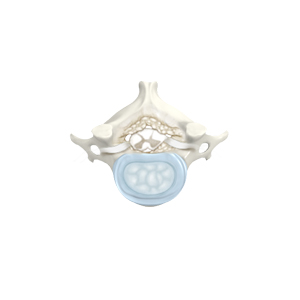Cervical Stenosis

Cervical spine refers to the neck portion of the spine, and cervical spine conditions may result from overuse injuries, trauma and certain diseases. Cervical stenosis refers to narrowing of the spinal canal that protects the spinal cord and its branching nerves. In some patients cervical stenosis can cause neck pain radiating to arms and hands, numbness or weakness in the legs. This condition causes cervical myelopathy and cervical radiculopathy. Dysfunction of the spinal cord caused by cervical stenosis is called myelopathy, and compromise of the spinal nerve roots is known as radiculopathy.
Causes
Cervical stenosis develops after age 50, because of aging and spinal wear and tear. Some patients have a history of back injury or trauma. Different disorders can cause nerve compression, such as:
- Thickening of spinal ligaments
- Osteophytes (bony overgrowths)
- Bulging or herniated discs
- Degenerative disc disease
Symptoms
Some people have no symptoms; they are asymptomatic. However, the symptoms may gradually develop and worsen over time. The most common symptom of cervical stenosis is mild to intense neck pain. Other symptoms include:
- Problems with gait and balance
- Clumsy hand coordination
- Upper extremity pain and weakness
- Numbness, tingling, pins and needles sensation
- Bladder and bowel problems
- Rarely, loss of function (paraplegia)
Cervical spinal stenosis is usually diagnosed based on the medical history, a physical and neurological examination, and diagnostic tests such as X-rays, CT or MRI scans, or myelography.
Cervical stenosis may be treated with conservative treatment approaches such as use of pain medications, physical therapy, epidural steroid injections, or acupuncture. In cases, surgery may be required to treat the condition. Surgery is usually only considered for patients in whom the pain is not responding to conservative treatment or with worsening neurologic deficits.
Related Links
- Neck Pain
- Whiplash
- Back Pain
- Lumbar Radiculopathy
- Degenerative Disc Disease
- Disc Herniation
- Facet joint Arthritis
- Sciatica
- Spondylolysis
- Spondylolisthesis
- Vertebral Compression Fractures
- Scoliosis
- Kyphosis
- Cervical Disc Herniation
- Lumbar Disc Herniation
- Cervical Radiculopathy/Myelopathy
- Cervical Stenosis
- Lumbar Stenosis
